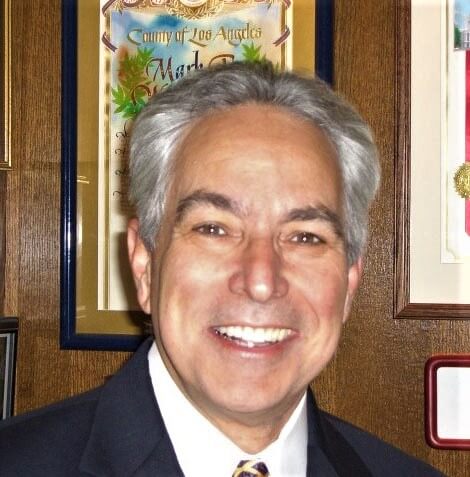COVID-19 Pandemic Likely to Bring Sweeping Changes to the Government Workplace

There are national and international events that have a great impact on our lives. The 911 terrorist attacks changed American life in many ways, most notably in how we travel, intelligence gathering and immigration policies. The current COVID-19 pandemic will surely create seismic changes likely to be far more impacting on how we travel, work, live and do business both in America and throughout the world. Because of the virus’ suspected origin, spread and deadliness it will alter how we treat the delicate balance between nature, man and other species. Likewise, the specter of viral or bacterial infections with the power to destroy wide swaths of humanity will spur changes in how we conduct research, provide medical care, and interact with each other daily.
The extent and destructive power of COVID-19 will also bring profound changes in how government operates at all levels from policy formulation and regulatory enforcement, to financing and service delivery. There is likely to be a greater reliance on technology that permits more e-government transactional services and converts even more communications and bureaucratic paperwork to digital media. Transportation systems will be designed and built with greater consideration for the spread of disease. Virtually all high contact services such as public health, police, fire, corrections, recreation and senior services will be required to review all programs and procedures for increased public safety and defense against infectious disease.
Public service agencies rely heavily on the health and availability of first responders and other employees to provide vital services. As such they must be at the forefront of reforming working conditions, practices and procedures to insure wellness.
- Governing bodies, executives and managers should incorporate employee and community health, safety and welfare as an explicitly stated core organizational value. As a core value, it should be given prominence in policy development, funding, resourcing, equipping, programming and procedures. A single point of contact should be designated to serve as the Workplace Wellness Director, and a formal report to the legislative body should be presented annually including incident data as well as recommendations to improve health and wellness.
- Agencies should have active wellness committees that expand their focus beyond eliminating workplace accident risks to include the prevention of all infectious diseases. The committee might include electeds, as well as executives, managers, labor leaders and line personnel.
- A resident (preferred) or visiting medical treatment professional should be added to every government agency based on staff size and level of direct public service. Periodic workplace inspections should occur to ensure proper health and sanitizing practices are in place. During illness outbreaks, random employee health screenings should occur.

- Buildings, offices and other facilities should include materials, furnishings and design features that are known to minimize the transmission of infectious disease. Custodial services should follow CDC, State, and County health protocols and periodic deeper cleanings should be applied to high-risk areas such as HVAC equipment, kitchen facilities, elevators, drinking fountains, keyboard, telephones, playground equipment, etc. Jails, senior facilities, and daycare centers are examples of categories that require detailed and stringent sanitizing protocols.
- Employee job descriptions should inform prospective government staff when their duties include frequent public interaction, or placement or confinement in shared common work areas (i.e. public safety dispatch centers). Legal disclosures regarding the risks of exposure to airborne, surface-transferred or other types of transmitted infectious disease may soon be required to safeguard employees. For high-risk exposure jobs, applicant medical screening for immune deficiency diseases or other underlying medical conditions or risk may be soon become common. Making clear in civil service regulations, MOUs and job descriptions that ALL government employees may be reassigned to alternate duties and may be subjected to increased levels of personal harm is important for employees to know. This is mandatory for working condition transparency and may reduce or eliminate valid claims for additional wage differentials or increased benefits during emergencies.
- To the extent practical, employer policies should be in place that anticipate emergency circumstances and how employee safety and welfare will be addressed. Such policies and plans need to include the provision of personal protective equipment (PPE), food, childcare and family support, medical supplies and even billeting.
- Agencies and their HR Departments should have flexible plans in place which allow for ramping up staffing very quickly to cope with fluctuations in workload or the inability for regular staff to report for duty.
- Sick leave benefits which allow cashing out unused sick time or otherwise inadvertently encourage employees to come to work when ill should be restructured. Likewise, it is time to dispense with perfect attendance awards. Organizations should consider adding or enhancing health, fitness, diet and exercise programs and benefits in the workplace.
Many of these health practices and initiatives may already be in place in government and private sector organizations. Consciousness-raising, funding, additional planning, and training are all that may be needed. However, other strategies can offer further benefit and should be considered. These strategies might include requiring proof of employee vaccination (when available) prior to being permitted to come to work and routine random employee health screenings. Work environment health rating systems like those used in restaurants could be employed in office environments and posted prominently. The CDC could also implement a color code alert system such as the Department of Homeland Security does for terrorist threats. Different code levels would automatically trigger appropriate public health responses to minimize the threat of spread. An infectious disease epidemic, by virtue of its attack on human life, unarguably becomes a national security threat and should be treated at least as such.
Improving employer health practices and reducing employee risk of serious illness will strengthen your agency’s efforts to brand itself as an “employer of choice” in an increasingly competitive hiring environment. Absenteeism will drop, productivity will rise, services will improve, and budget savings will be realized. Perhaps most importantly, safe, healthy employees are more satisfied and content.
We all have a duty to safeguard individual and public health in order to preserve our freedom and quality of life. Nowhere is this obligation more vital than as it applies to emergency services first responders, essential service providers, and medical treatment personnel.

CAREER ADVICE

GOV TALK





